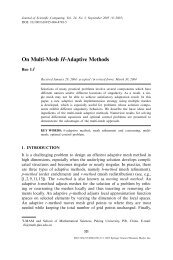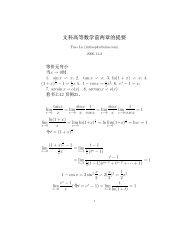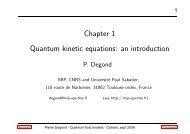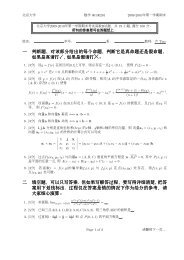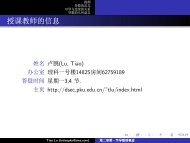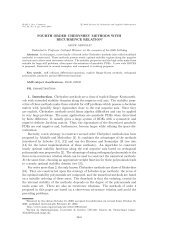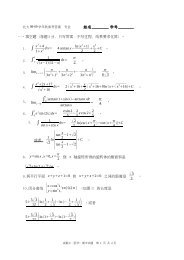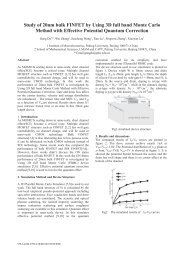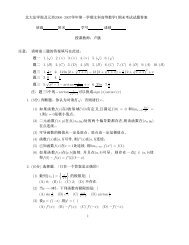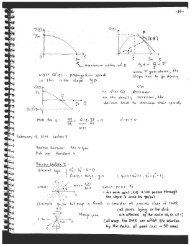You can download: Key to the second test
You can download: Key to the second test
You can download: Key to the second test
You also want an ePaper? Increase the reach of your titles
YUMPU automatically turns print PDFs into web optimized ePapers that Google loves.
1. (D + 2)(D + 1)y = e 2x + 3e 3x + x 2 e x<br />
yp = Ae 2x + Be 3x + (C + Dx + Ex 2 )e x<br />
2. (D + 2)(D + 1)y = sin 2x + sin 3x<br />
yp = A cos 2x + B sin 2x + C cos 3x + D sin 3x<br />
3. D 2 (D + 2)(D + 1)y = 3x 2 + cos(3x)<br />
yp = x 2 (A + Bx + Cx 2 ) + D cos 3x + E sin 3x<br />
4. (D 2 + 4)y = x sin 2x + e x<br />
yp = x[(A + Bx) cos 2x + (C + Dx) sin 2x] + Ee x<br />
5. (D + 2)(D + 1)y = e 2x cos(2x)<br />
yp = Ae 2x cos 2x + Be 2x sin 2x<br />
(Hint: In this problem, we suppose that y(x) is <strong>the</strong> unknown function and x is <strong>the</strong> independent<br />
variable. D is an opera<strong>to</strong>r denoting <strong>the</strong> opertion of differentiation with respect <strong>to</strong> x, so that<br />
Dy = dy<br />
dx<br />
We know it is easy <strong>to</strong> get <strong>the</strong> characteristic equation for differential equations written by using<br />
<strong>the</strong> opera<strong>to</strong>r D, e.g. <strong>the</strong> characteristic equation of<br />
is<br />
= y′<br />
(D − 2) 2 (D + 3)y = 0<br />
(r − 2) 2 (r + 3) = 0).<br />
2




